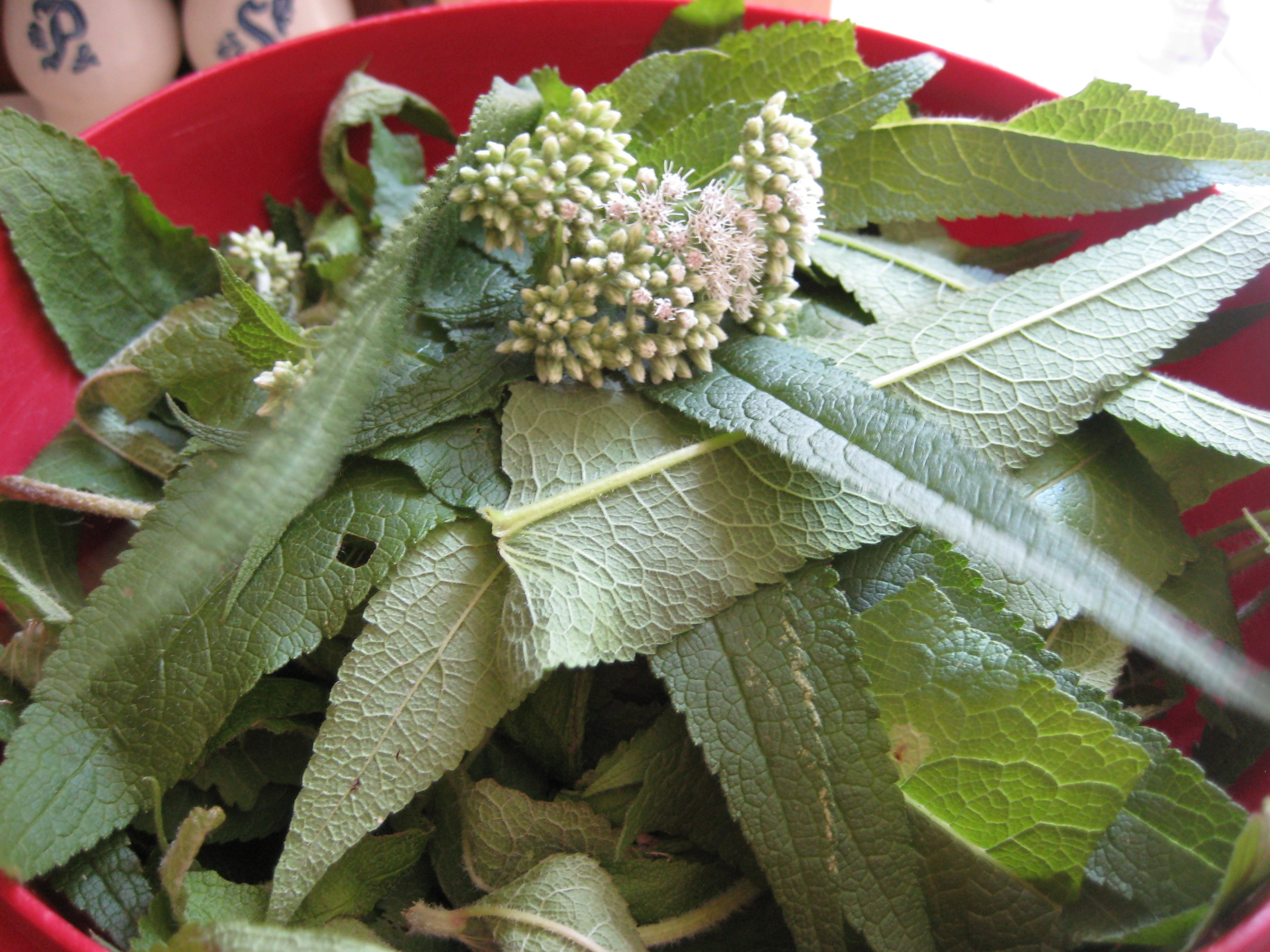
Making your own boneset (Eupatorium perfoliatum) or goldenrod (Solidago spp.) tincture is simple. A great time to harvest is just before it flowers. In western NY, this is generally in mid- to late summer for boneset, and late summer into fall for goldenrod. Harvest by clipping the stem above a set of leaves. No need to take leaves that look old and yellowed at the bottom of the plant. Remove and keep the leaves, flowers or flower buds, and any soft portion of the stem. Discard the woody stalk.
Safety Note: Boneset has been found to contain pyrrolizidine alkaloids, which can cause acute liver damage if used in large doses and/or long-term. Not recommended for children or individuals with a history of liver issues. These days, I’d generally recommend an alternative, since there are so many effective and non-toxic herbs out there.
You may either dry your harvested plant material, or tincture it fresh.
a. Tincture of fresh plant material:
· If you have a kitchen scale: weigh plant material. Chop finely and stuff into mason jar. Add 2 fluid ounces 100-190 proof clear liquor for every 1 ounce plant material by weight. Use metal utensil to press air bubbles out. (I generally use 190 proof for fresh plant material).
· If you don't have a scale: Chop plant material and stuff into mason jar. Add enough 100 proof clear liquor to barely cover plant material. Use a metal utensil to press air bubbles out.
b. Tincture of dry plant material:
· If you have a kitchen scale: weigh plant material. Chop finely and pour into mason jar. Add 5 fluid ounces 100 proof clear liquor for every 1 ounce plant material by weight. Use metal utensil to press air bubbles out.
· If you don't have a scale: Same directions as fresh tincture.
For both a and b:
Let tincture macerate (steep) for at least a month, shaking daily or as often as you remember. If plant material comes above the surface of the liquid, push it back down with a spoon. Strain through cheesecloth (or old clean t-shirt) and wring out well, saving as much liquid as possible. Discard plant material. Voila! Store your completed tincture in an amber bottle if possible, in a cool, dark place.
Dropper tops degrade over time, imparting a rubbery flavor to the tincture. When storing for more than a year, use an alcohol-safe lid. (Phenolic cone-lined caps are great.)
